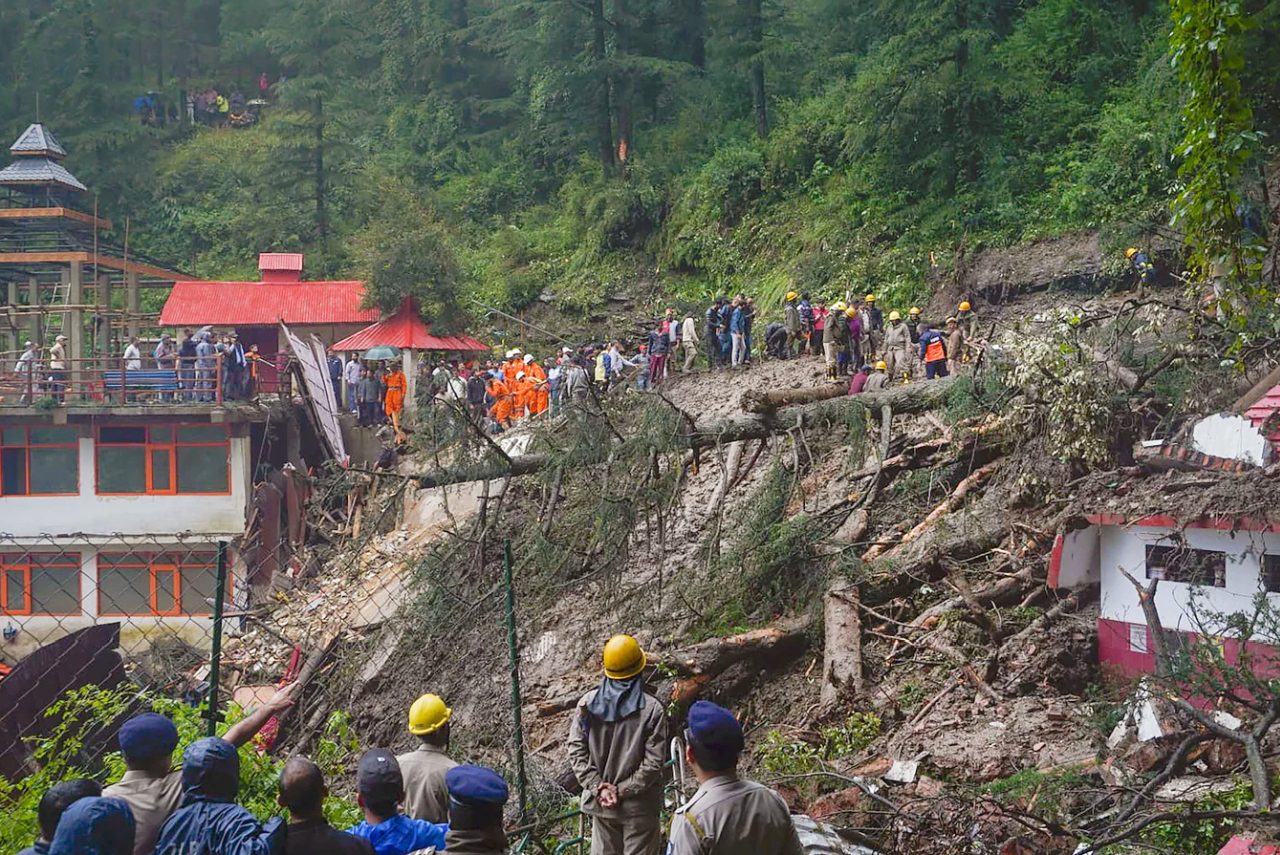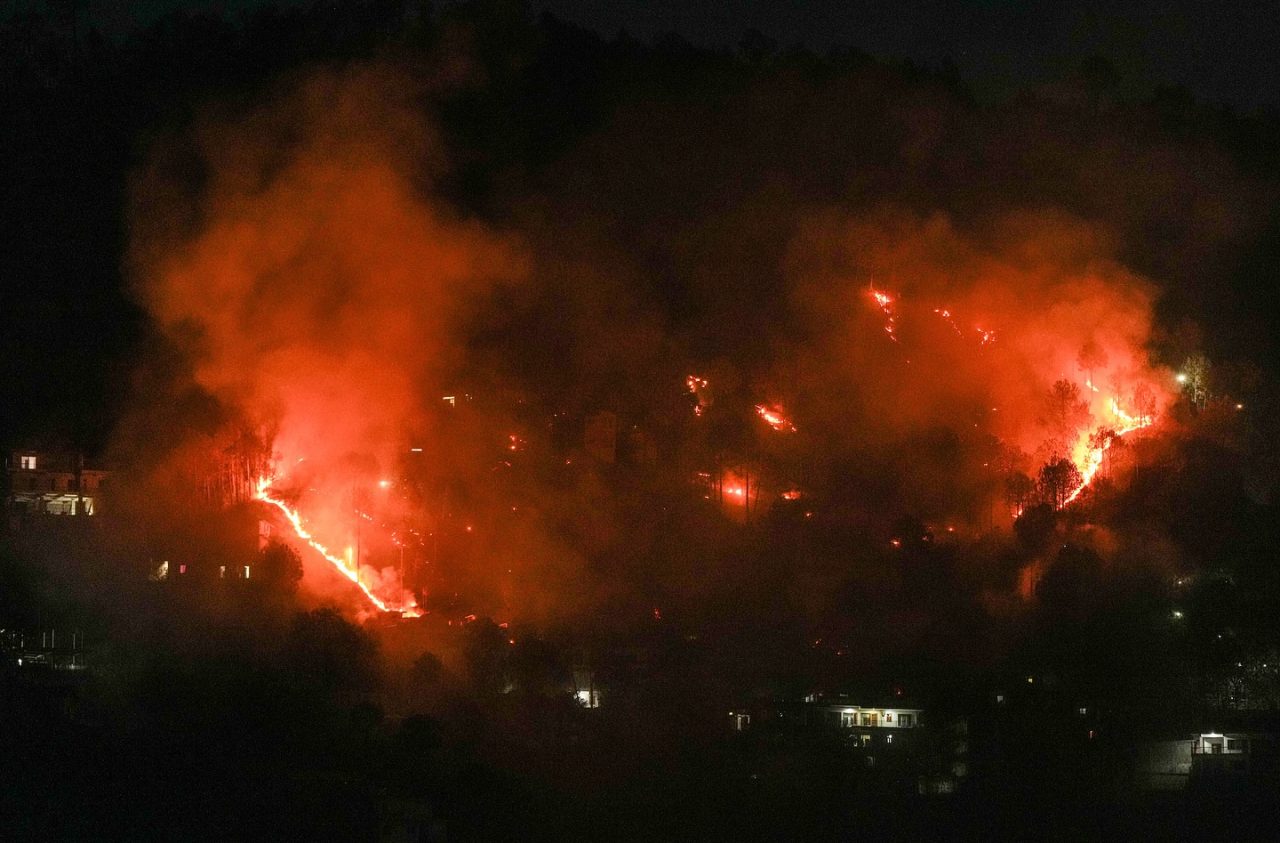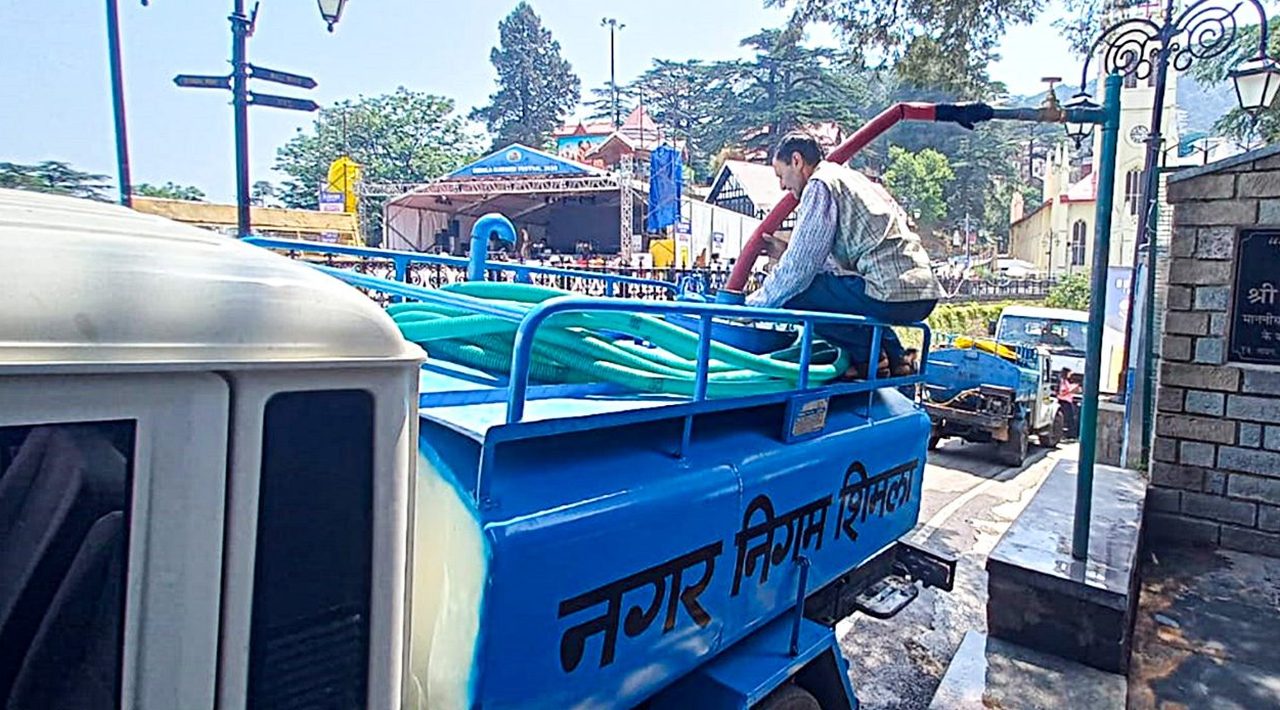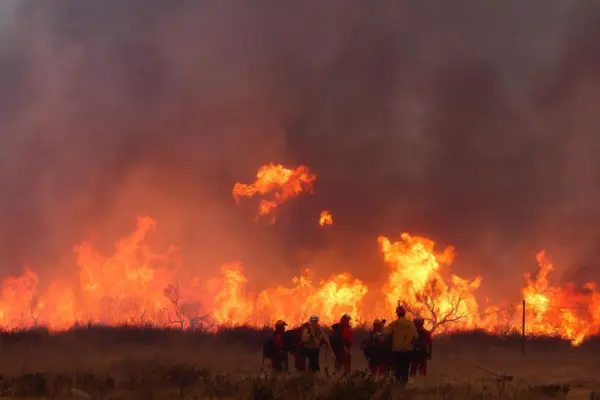Himachal Pradesh Buckles up for Extreme Monsoon After Last Year’s Onslaught
Poor planning, heavy tourist influx, and looming threat of destruction amid torrential rains
Unsurprisingly, monsoons in India have been unpredictable for a couple of years now, with extreme heatwaves hitting the nation hard, wreaking havoc and causing landslides and flash floods as soon as the torrential rains begin. Last year, the north Indian state of Himachal Pradesh had to bear the brunt of excessive rains and ensuing destruction wherein many highways washed away in landslides and flash floods.
The Himalayan state was brought to a standstill with a magnitude and intensity of monsoon never seen before in the region. However, the hill state bounced back and got to work as soon as the rains stopped. Alas, all of it was for nothing as the Monsoon 2024 is proving worse than its predecessor.
The season has just begun and heavy rains have lashed parts of Himachal, destroying many of the newly repaired roads and affecting vehicular traffic. The weather department has warned of heavy rainfall in coming days.
Himachal Extreme Monsoon 2024
Himachal Pradesh is bracing itself for an extreme monsoon season in 2024 after it only reeled back from the destruction the season brought to the state. According to the meteorological department earlier this week, Kataula village in Mandi was the wettest in the state with 169 mm of rainfall, Pandoh received 117 mm, followed by Hamirpur district’s Sujanpur Tira with 88 mm, Mandi’s Gohar village 60 mm, Shimla’s Mashobra 58 mm, and Dharamshala 56.4 mm.
The weather department has dispensed a yellow warning for heavy rains along with thunderstorms and lightning at isolated places in Himachal till July 7. However, despite the bad weather, the humidity levels are riding high with Kullu’s Bhuntar witnessing the hottest day at 35.6 degrees Celsius on July 3.
The torrential rains have caused at least 17 roads to be blocked. Cracks have developed on the road between Mandi and Pandoh on the Chandigarh-Manali four-lane highway, causing it to start sinking. On July 5, at least 115 roads were closed to traffic.
236 power distribution transformers have been disrupted due to the precipitation and 19 water supply schemes were stalled. Meanwhile, the weather department has issued a yellow alert for heavy rain at isolated places across the state. The most affected area is Mandi district, where many roads remain closed.
The Manali-Leh highway has also observed severe disruptions. A stretch of about seven kilometers ahead of Jingjing Bar was suddenly closed around midnight on July 5 due to floods caused by continuous glacier melt.
Also Read: Extreme Climate Change Brings Relentless Rainfall This Year, Triggering Flash Flood Warnings
In low-lying regions of Paonta Shaib, Una, and Kangra, waterlogging gin houses and animal sheds were reported due to intermittent rains. Meanwhile, poor drainage systems in Baddi caused giant puddles on the roads. Consequently, a flood alert was issued for parts of Kangra, Sirmaur, and Shimla districts.
Following torrential rains, several rivers in Himachal have swollen, with rising water levels in the Beas, Sutlej, and Ravi rivers along with numerous smaller streams. The authorities have issued warnings to tourists and residents near riverbanks to stay alert and avoid riverside amid the risk of flooding. The rain activity is forecasted to decrease starting July 8.

Image: Hindustan Times
Last year, the Himalayan state suffered over $1.42 billion worth of property damage during the monsoon season, while an estimated 428 people died.
Sensitive Himalayan Ecology
It might be easier to chalk these incidents up as natural disasters, but the glaring fact is that human-caused climate change and anthropogenic activities such as relentless construction have been wreaking havoc on the ecologically sensitive Himalayan region for the past decade. The constant building of highways, tunnels, hydro-power plants, and dams in the Himalayan region has long plagued the states of Himachal and Uttarakhand, without any regard for the fragile ecosystem.
The land is already flood- and earthquake-prone, adding unabated construction in its unstable terrain for monetary gain and to ease human life, the region has given way to calamities. The 2014 floods in Uttarakhand, Joshimath sinking, and last year’s catastrophe in Himachal during monsoons were but a small glimpse of the damage that could happen if natural disaster planning and prevention fail to be implemented on time.
Last year, Himachal observed more damages to property than the last five years combined. The heavy rains triggered hundreds of landslides, overflowing rivers sweeping vehicles and houses alike. Important highways were either submerged in overflowing rivers or brooks, or destroyed.
A 2023 study discovered that numerous lakes in the Himalayan mountain region are inching toward glacial lake outburst floods due to rising temperatures. Currently, over 200 such volatile lakes pose an existential threat to communities in the Himalayan region in India, China, Pakistan, Nepal, and Bhutan. Despite the looming danger, India has no systems in place to detect and sound the alarm in advance for glacial outbursts, leaving many at risk of floods.
Changing Rain and Snowfall Patterns
The rapidly changing climatic conditions are not only causing glacial lake outbursts but also affecting the rain and flow patterns in the Himalayan nations. The winter of 2023-2024 received one of the lowest snowfalls in Jammu & Kashmir and Himachal Pradesh, leaving the tourism-dependent economies of both states in dismay.
Aside from that, the lack of snowfall led to parched river systems, which led to a crippling water crisis in the entire northern India.
The no-snow winters have a huge impact on the ecology of these states. The snow-fed rivers go low during the spring and summer, while the dependency on river water for drinking and utility leaves the dependent region in a state of panic. It also translates into poor apple yields in the state of Himachal Pradesh.
Meanwhile, the monsoon season brings a strong lashing that leaves the hilly states in Himalaya’s lap with a whiplash; from dealing with heatwaves one day and getting heavy rains the next.
Record-Breaking Heat and Forest Fires
While the rainfall patterns have been shifting drastically, the Himalayan state also witnessed record-breaking heat and devastating forest fires in the summer of 2024. In the state capital Shimla – which is a popular hill town with mild summers – the unprecedented temperatures surpassed 31.7 degrees Celsius, about 6 degrees higher than the usual average. This marked the highest temperatures since 2012.

Image: PTI News/Arun Sharma
Not only that, the state reported 1,038 forest fires this summer. The forest department of Himachal Pradesh deployed over 3,000 local field officers across the state to deal with the forest fire breakouts, while 18,000 volunteers of the state disaster management authority were helping.
According to the state’s Principal Chief Conservator of Forests indicated that the rise in fire incidents is due to the heatwave conditions in the state. The dry forests provided perfect kindling, while human activities like throwing a lit cigarette in the forest and lighting fires to clear up the dried leaves and grass ultimately lead to wildfires that not only cause property damage but loss of life in both humans and animals, not to mention reducing majestic forests to ash.
The majority of fires were witnessed in Shimla, Solan, Bilaspur, Mandi, and Kangra districts. Frequent fires broke out in May and June when the temperatures broke multiple records.
In the light of alarmingly rising number and intensity of forest fires, the state government launched an investigation into the effectiveness of industries employing pine leaves. Dry pine needles, strewn about the forest bed, work as gunpowder during the wildfires.
Burdened Ecosystem, Water Crisis and Pollution
Meanwhile, Himachal Pradesh seems to have an ecological crisis on its hands amid the influx of tourists burdening the ecosystem, water shortage, and vehicular pollution. Shimla – the queen of hills – is now known for its traffic congestion thanks to over-construction, lack of parking spaces and proper roads, resulting in a headache for daily commuters.
Also Read: Why are the Himalayas Ecologically Sensitive and Disaster Prone?
Every year, the hill state chokes under the pressure of tourism. In the absence of proper management, haphazard construction, and long queues of traffic, the residents in popular destinations like Shimla, Manali, and Dharmshala bear the brunt of pollution, noise, and lack of resources like water.
During the hot months, when people from other parts of India flock to the relatively pleasant climates of these tourist destinations. To cater to the significant tourism-fed economy of the state, the roads become choked resulting in hours of traffic to cover the distance that usually takes a handful of minutes.
The water supplies toward residential areas become less frequent and diverted toward hotels and restaurants to keep the visitors happy and satisfied. As if that is not enough, the tourists – with no regard for the safety and cleanliness of the place they are visiting – throw garbage haphazardly out of moving vehicles onto the roads or pavements, reducing the state to a downright unpleasant condition for others.
Vehicular and water pollution has spurred environmental degradation in the states, which is furthered by over-tourism and illegal construction. Meanwhile, the government has turned a blind eye to the issue, continuing to promote tourism and inviting more people to tarnish the once lush state.

Image: The Indian Express
It is not only a matter of anti-tourism sentiment running through the local citizens, many of whom depend on the influx of tourists for livelihood, but in a much larger picture the burden on the already fragile ecosystem of the state, which can give way to destruction at any moment.
Instead of encouraging more people to the state, the authorities and citizens must form a sustainable tourism plan that will benefit all parties involved, including the ecology of Himachal.
Changing Agriculture and Horticulture
The altering rainfall, snowfall, and climate patterns have led to circumstances proving difficult to farm in Himachal. Since the hill state’s agriculture and horticulture depend vastly on rain and snow, over 50% of crops either get damaged due to water scarcity, lack of snow, or too much rain or sleet.
Even during times, when the rainfall patterns are amiable, the crop yields have been dropping significantly amid the rising temperatures.
But it is not the first time, the state’s farmers are going through a difficult time because of the changing climate. The water shortage and unreliable weather have become the norm for the farming community in the state where most of the population relies on agriculture and horticulture for livelihood.
Given that there is no going back as the world has reached the tipping point, the only solution is climate adaptation and finding alternative methods and crops to survive.
Conclusion
All these factors combined have put in an inevitable doom for the hilly state of Himachal. The only question is how to delay the inevitable at this point. By the time the state is done entertaining travelers during the summer, monsoon arrives, leaving the authorities unprepared and overwhelmed.
The only solution is to keep the ecosystem intact, take stringent action against illegal logging and construction, keep small brooks and streams clear of any debris and blockage that can lead to flash floods once the rains come down, and practice sustainable tourism that will leave room to breathe for both local and visitors.
The rapid construction of hills and mountains by tunneling through them and the hydro-projects across the state will only end in devastation. It is necessary to preserve the unique environment of the state so that it may survive the extreme climate changes.


